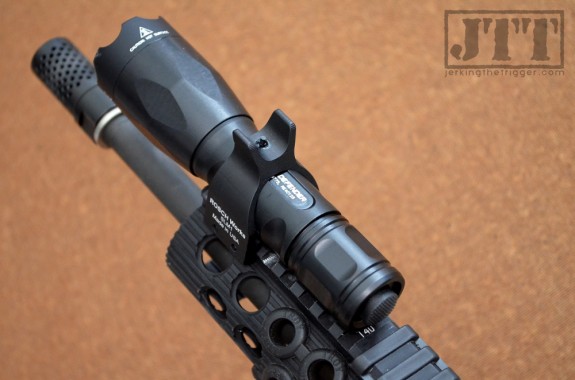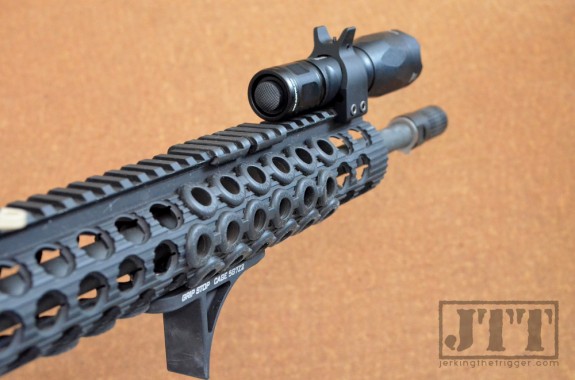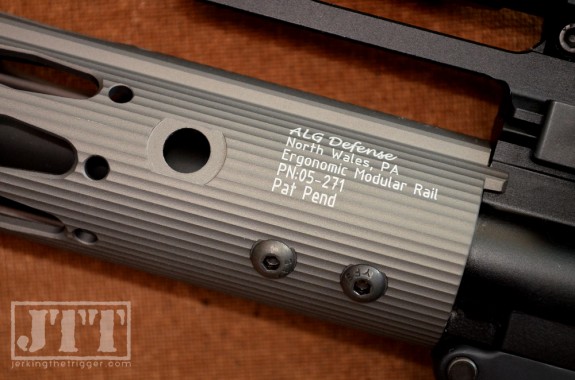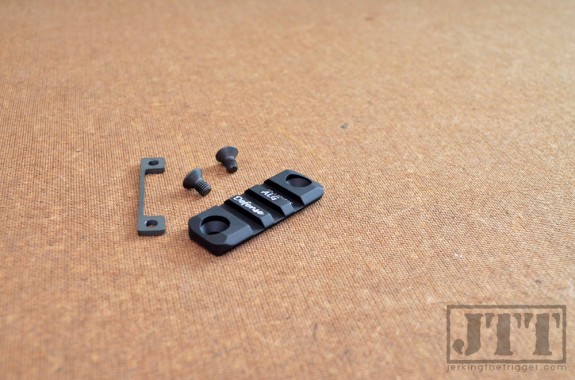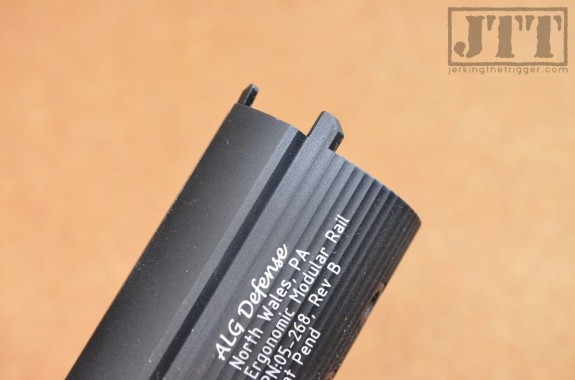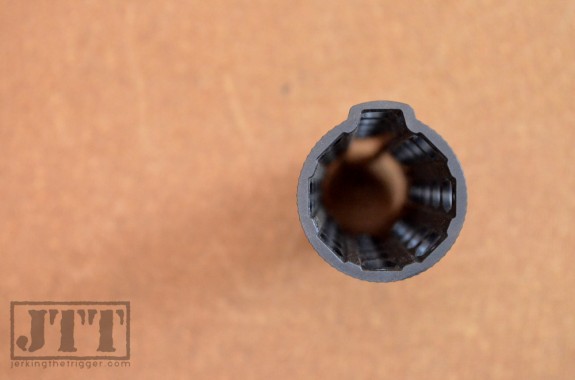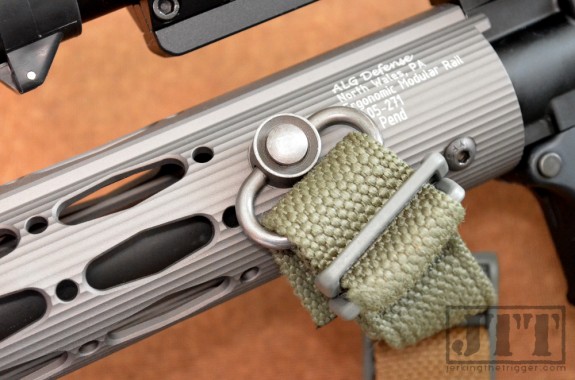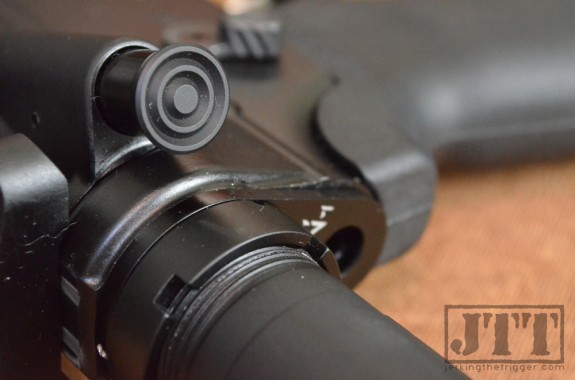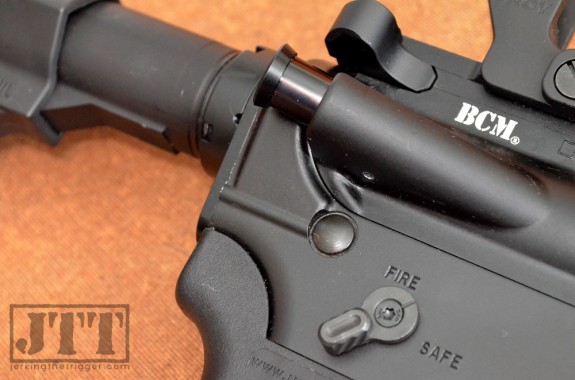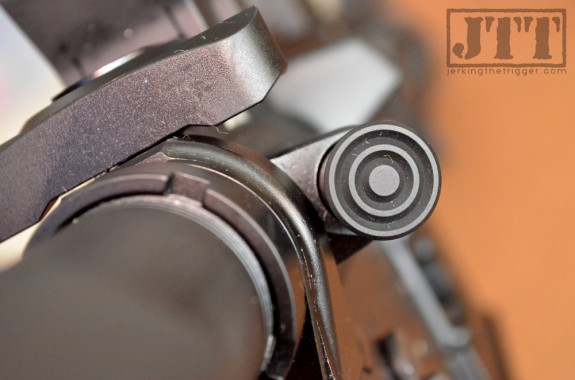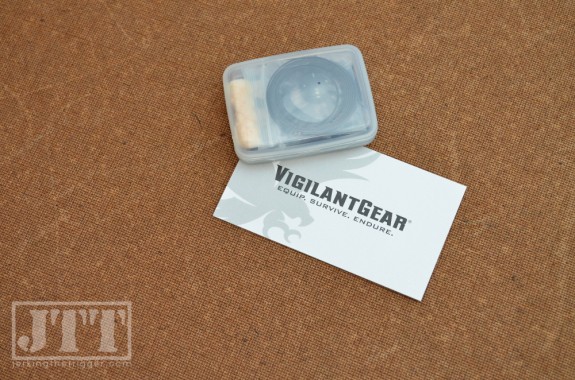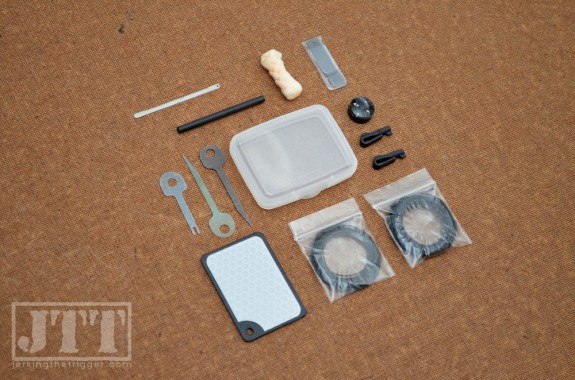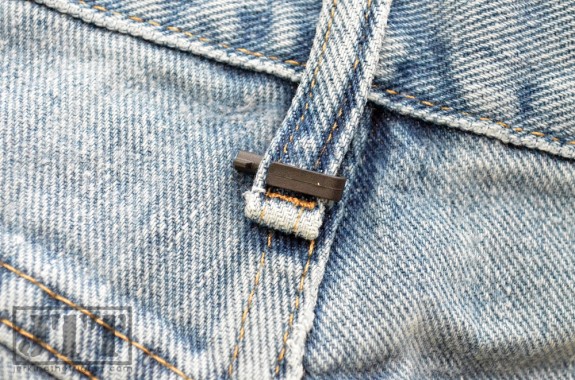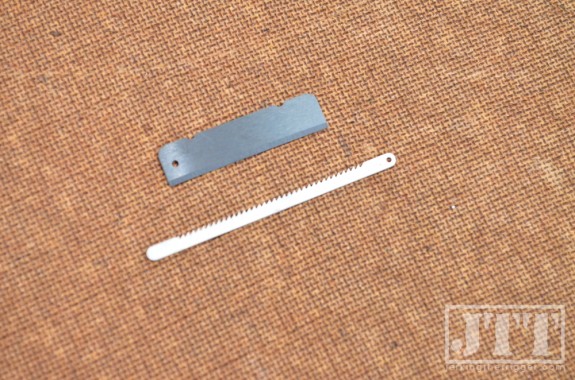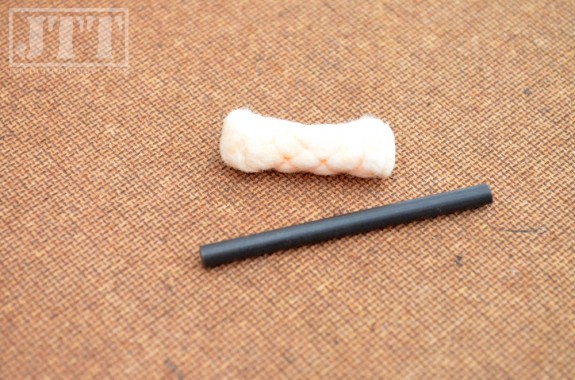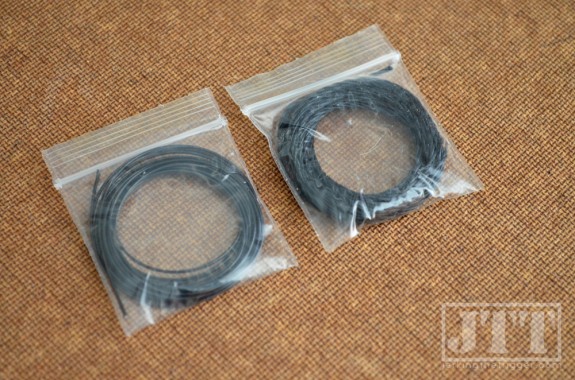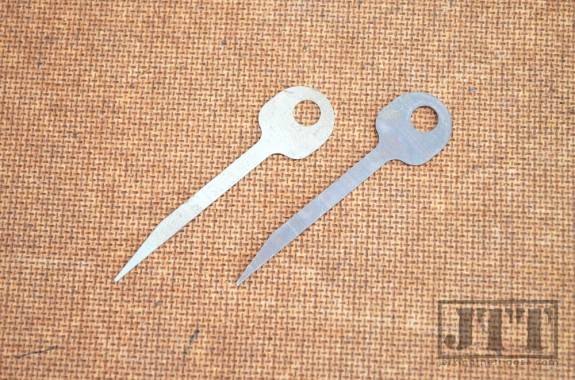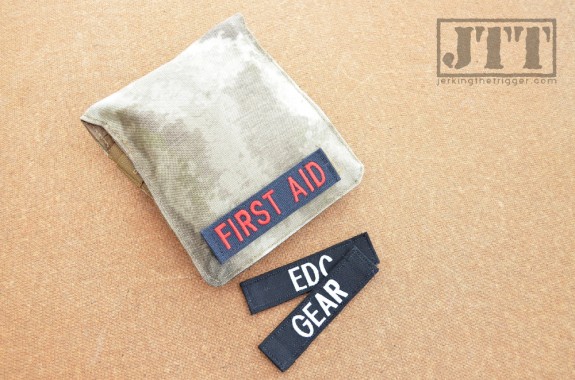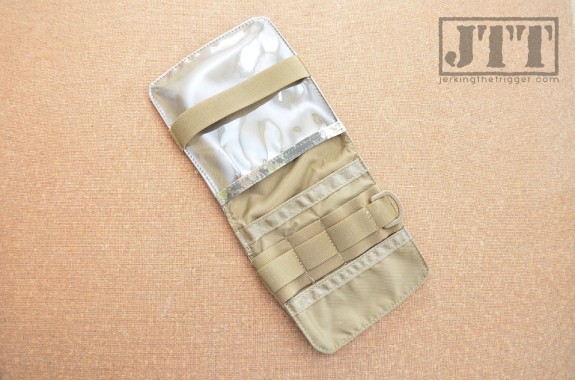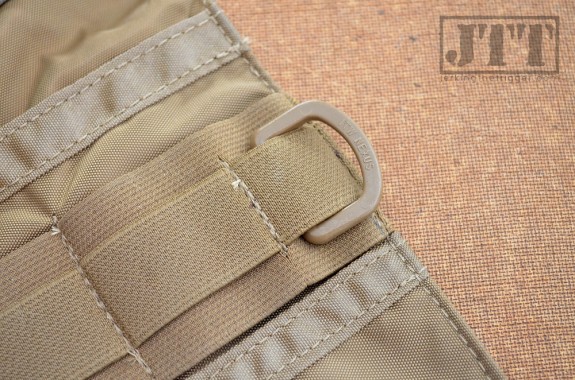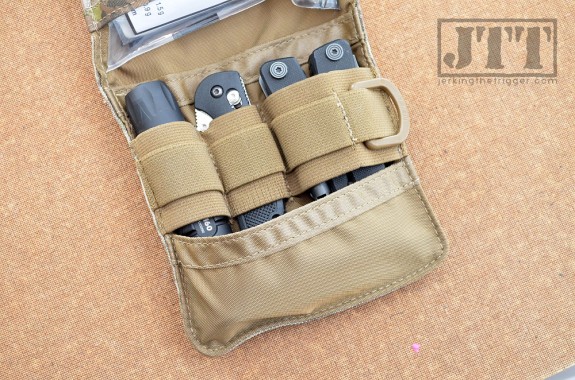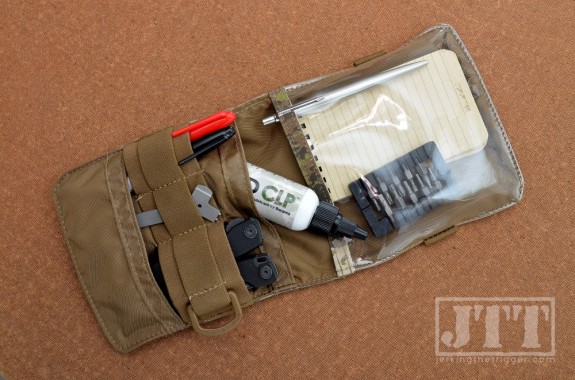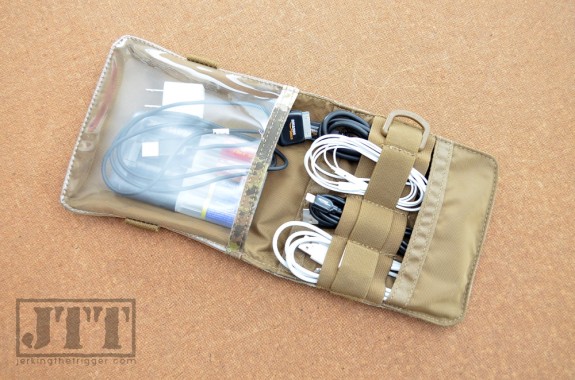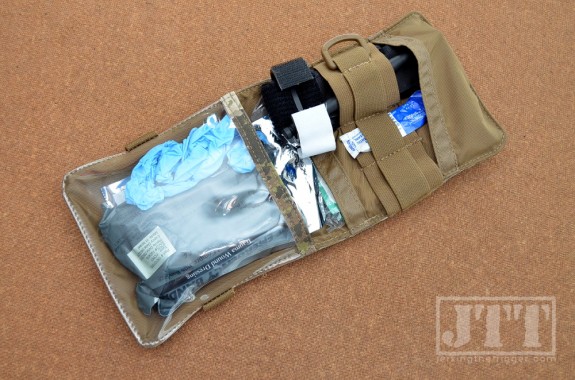The ROSCH Works SLM1 is a product that fans of 12 o’clock mounted lights have been anticipating for a long time. I am happy to say it is finally here and it is excellent.
Overview
The SLM1 is a light mount with an integrated front sight. This combination allows users to mount a traditional handheld tactical light on the top rail of an extended free-float rail in the optimal position. It absolves the user of trying to figure out where to place both a light and separate front sight.
The SLM1 is machined from 7075 T6 aluminum (sight and hardware are steel) that has a black hard anodized finish. The SLM1 weighs just .8 ounces on its own. It is designed to fit any light with a 1” (+- .005”) diameter though lights like the Surefire Fury series and 6PX work best due to the flats and inset machined into their bodies (more on this later).
Observations from Use
The bottom line up front is that the SLM1 works and it works well. I have been waiting for a mount like this for years and I am not disappointed.
Mounting the SLM1 is fairly straight forward. It attaches to the rail via two steel cross bolts. You do need to take just a bit of care with your placement on the rail. If the like you are using has a large, flared bezel like the Surefire P2X Fury that I used, you will have to mount the light far enough forward that the bezel can stick out beyond the end of the rail so that the bezel can clear the rail. You would likely be placing it out at the end of the rail anyway since that is the optimal place for a 12 o’clock mounted light. Just don’t think you are going to be able to mount a light with a large bezel anywhere along the top rail.
Adjusting the front sight elevation is easy but it does require tools. You simply loosen the lock screw with the provided wrench and then use the provided front sight tool to raise or lower the front sight post by twisting it. Once you have set the desired height, retighten the lock screw.
I mentioned previously that lights with flats and insets machined into their bodies will work best. This is for the purposes of adjusting elevation at the front sight post. ROSCH Works really had to squeeze everything into a small space in order to create a mount that would 1) hold a 1” diameter light and 2) place the front sight at the correct height. As a result, the front sight might need to be able to drop below the top of the light ring to allow for enough elevation adjustment. The inset or flat on the body of the light allows the front sight to drop lower, thus raising the point of impact higher.
I should note that many lights say they are 1” diameter lights when they are actually as much as .1” larger or smaller. The design challenge of fitting the light and front sight into a very small space dictated that the SLM1 has very tight tolerances. When ROSCH Works says it is for 1” diameter lights, they mean it. This mount does not have as much wiggle room as most so if you are going to stray from the recommended Surefire lights, it would wise to check the diameter of the light you intend to use with calipers.
Like the SL1 before it, ROSCH Works manages to make SLM1 a pretty darn good front sight in its own right. It is very finely adjustable and it features a front sight post that is finer than most with a slight taper. The front sight post is protected by wings that flare out like a standard front sight tower.
The SLM1 does little to obstruct the view through an optic. It barely encroaches the field of view even with smaller optics like the Aimpoint T1. It basically looks no different than having a fixed front sight base though if you use a light with a large bezel, you may see just a bit of the bezel below and on either side of the front sight. I have been using the SLM1 with a Surefire P2X Defender which has a very large bezel with no issues.
While the SLM1 will work for any truly 1” diameter light, the Surefire Fury series seems especially well suited to the task. The beam is very well balanced between flood and throw and the switch is positive and easy to use in this position. I like the EAG or Defender version since they have a single 500 lumen output mode and a forward clicky switch. The SLM1/Surefire Fury combo is a thing of beauty.
I especially like how the SLM1 saves weight and space! At just .8 ounces, it weighs less than most front sights alone! When you add in the fact that it is your light mount too, the weight savings are impressive. The set up as shown weighs 6.5 ounces which is very light for a 2 cell light with mount and front sight.
Wrap Up
ROSCH Works has a real winner on their hands here. Packing everything into such a small package took a bit of wizardry. That wizardry comes with limitations but this mount is sturdy, lightweight, functional, and it brings great options like the Surefire Fury to 12 o’clock light users. I can’t help but feel this is an important development for 12 o’clock mounted lights and probably weapon lights in general.
Check out the SLM1 at ROSCH Works. Stay tuned for news on their soon to be released Surefire E-Series version.
Click here for more information on 12 o’clock mounted lights.


